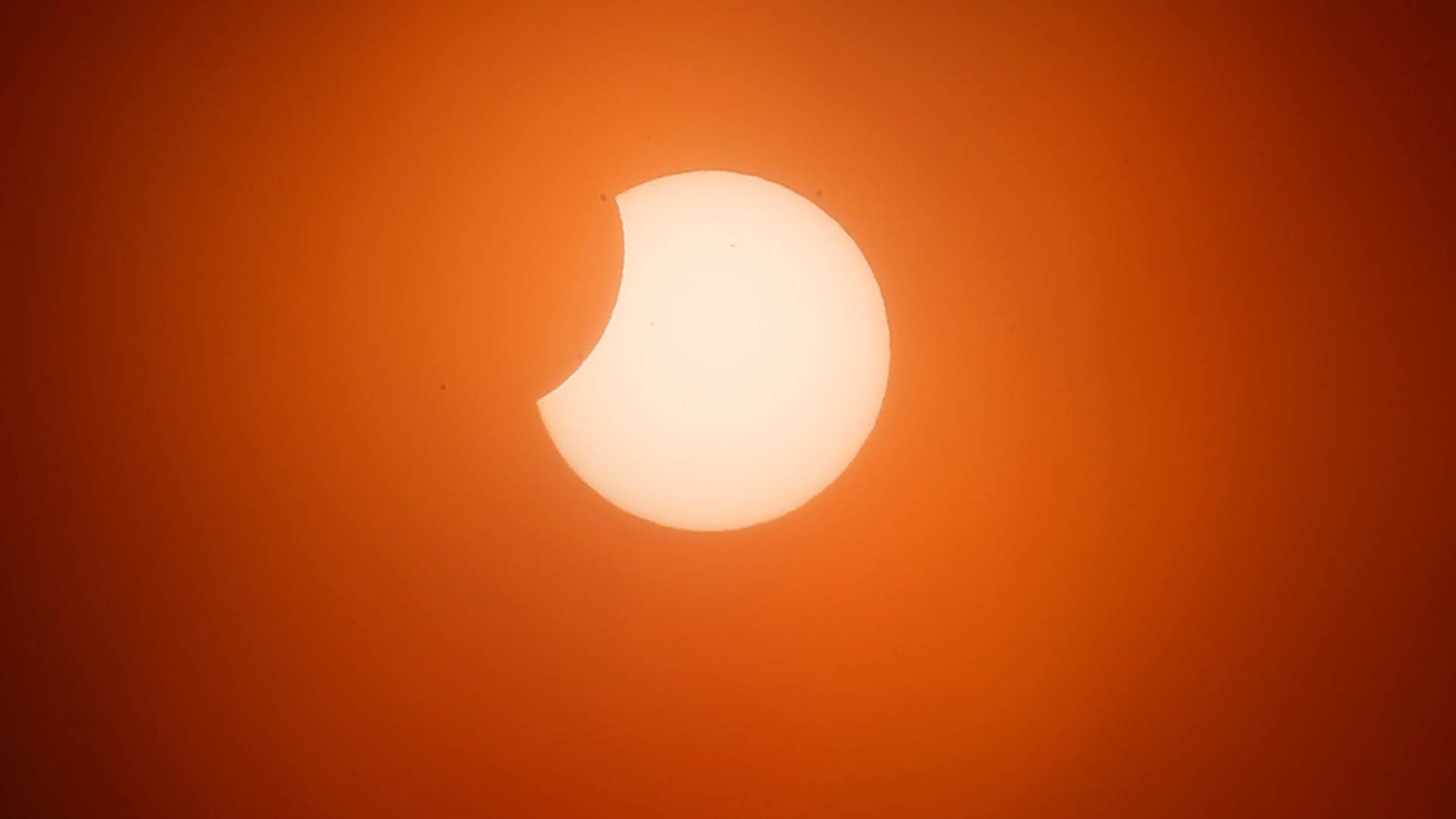A partial solar eclipse which will make the sun “appear to have a bite taken out of it” will be visible from across the UK on Tuesday.
Experts have warned people not to look directly at the sun, while parts of Scotland and Northern Ireland are expected to enjoy the best views.
In London, the phenomenon will begin at 10.08am with the maximum eclipse occurring at 11.13am, when the moon will cover close to 15% of the sun.
Lerwick in the Shetland Isles is expected to have a good view, with 28% of the sun obscured at mid-eclipse.
Belfast is expected to see 25% of the sun hidden at 10.53am.
The solar event will be visible from most of Europe, north Africa, the Middle East and western parts of Asia.
Jake Foster, astronomer at Royal Observatory Greenwich, said: “The amount of obscuration you’ll see will depend on where you are.
“Those viewing from the UK will see between 10% and 20% of the sun covered by the moon.
“Even though a portion of the sun’s light will be blocked, it will not get noticeably darker in the UK during the eclipse.”
The partial eclipse will end at 11:51am.
Dr Robert Massey, of the Royal Astronomical Society, said the phenomenon will cause the moon to block the view of “some or all of the bright solar surface” – and the sun will “appear to have a bite taken out of it”.
He said observers in western Siberia, Russia, will get the best view of the eclipse, where the moon will obscure a maximum of 85% of the sun.
How should you watch the eclipse?
Dr Massey warned looking directly at the sun can cause serious damage to the eyes – and people should not view the event through binoculars, telescopes or a telephoto lens on an SLR camera.
He added: “The simplest way to watch an eclipse is to use a pinhole in a piece of card.
“An image of the sun can then be projected on to another piece of card behind it (experiment with the distance between the two, but it will need to be at least 30cm).
“Under no circumstances should you look through the pinhole.”
Dr Massey said another popular method used to view an eclipse is the mirror projection method.
He said: “You need a small, flat mirror and a means of placing it in the sun so that it reflects the sunlight into a room where you can view it on a wall or some sort of a flat screen.
“You may also have eclipse glasses with a certified safety mark, and these are available from specialist astronomy suppliers.
“Provided these are not damaged in any way, you can then view the sun through them.”
Read more on Sky News:
Check the weather for your area
Mini-tornado in France damages dozens of homes
Binoculars or telescopes can also be used to project the image of the sun.
Dr Massey said: “Mount them on a tripod and fit one piece of card with a hole in it over the eyepiece, and place another between 50cm and a metre behind it.
“Point the telescope or binoculars towards the sun and you should see its bright image on the separate card.”
For those keen to follow the event, the Royal Observatory Greenwich will stream the eclipse on its website and YouTube channel.
